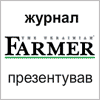The FAO Food Price Index continues to drop

The FAO Food Price Index (FFPI) averaged 126.9 points in March 2023, down 2.8 points (2.1 percent) from February, marking the twelfth consecutive monthly decline since reaching its peak one year ago. During the past twelve months since March 2022, the index has fallen by as much as 32.8 points (20.5 percent).
The decline in the index in March was led by drops in the cereal, vegetable oil and dairy price indices, while those of sugar and meat increased.

The FAO Cereal Price Index averaged 138.6 points in March, down 8.2 points (5.6 percent) from February and 31.6 points (18.6 percent) below its one year ago. This month’s decrease reflects a fall in international prices of all major cereals.
International wheat prices fell the most, by 7.1 percent, driven by ample global supplies and strong competition among exporters. The extension of the Black Sea Grain Initiative, allowing Ukraine to continue to export from its Black Sea ports, also contributed to the decline. Higher estimates for Australia’s production, along with improved crop conditions in the European Union this month, boosted the global supply outlook further. Strong competition from the Russian Federation, where high supplies continue to support competitive prices, also sustained the downward pressure on markets.
World maize prices also fell, by 4.6 percent, in March, pressured by seasonal availability from harvests in South America, expectations of a record output in Brazil, and the extension of the Black Sea Grain Initiative.
Among other coarse grains, world prices of barley and sorghum declined by 6.7 percent and 5.7 percent, respectively, influenced by spillover from weakness in international maize and wheat markets.
International rice prices eased by 3.2 percent in March, weighed by ongoing or imminent harvests in major exporting countries, including India, Viet Nam and Thailand.
The FAO Vegetable Oil Price Index averaged 131.8 points in March, down 4.1 points (3.0 percent) from February and standing as much as 47.7 percent below its level a year ago. The decrease in the index was the net result of lower soy, rapeseed and sunflower oil quotations more than offsetting higher world palm oil prices.
After falling for three consecutive months, international palm oil prices rebounded in March. Besides lower output levels in Southeast Asia due to unfavourable weather and floodings in some growing regions, palm oil prices received further support from limited global exportable supplies amid temporary export restrictions imposed by Indonesia.
By contrast, world soyoil prices continued to fall, following the trend of lower international soybean quotations.
In the meantime, rapeseed and sunflower oil prices also kept declining, underpinned by, respectively, ample world supplies and subdued global import demand.
The FAO Dairy Price Index averaged 130.3 points in March, down 1.1 points (0.8 percent) from February and standing 15.6 points (10.7 percent) below its level in the corresponding month a year ago. The decline in March was driven by lower price quotations for cheese and milk powders, while butter prices increased.
The decline in the international price quotations for cheese was underpinned by slower purchases by most leading importers in Asia amid increased export availabilities, including inventories, in leading exporters.
Milk powder prices fell for the ninth consecutive month, primarily reflecting sluggish import demand, especially for near-term deliveries, and seasonally rising milk production in Western Europe.
By contrast, butter prices increased due to solid import demand, especially from North and Southeast Asian countries, for supplies from Oceania, where seasonally falling milk production tracked slightly below trend levels.
The FAO Meat Price Index averaged 113.0 points in March, slightly up (0.9 points and 0.8 percent) from February but down 6.3 points (5.3 percent) from one year ago.
In March, price quotations for bovine meat increased, influenced by rising internal prices in the United States of America, where cattle supply is expected to be lower in the months ahead.
Pig meat prices increased slightly, mainly due to higher prices in Europe on the continued supply limitations and increased pre-Easter demand.
By contrast, poultry meat prices fell for the ninth successive month on subdued global import demand, despite supply challenges amid widespread avian influenza outbreaks in several large exporting countries.
Ovine meat prices also averaged lower, reflecting a downward adjustment from the high prices registered in February, driven by increased pre-Easter demand and the impact of exchange rate movements.
The FAO Sugar Price Index averaged 127.0 points in March, up 1.8 points (1.5 percent) from February, marking the second consecutive monthly increase and reaching its highest level since October 2016. The increase in prices mostly resulted from concerns over lower global availabilities of sugar in the 2022/23 season, following declining production prospects in India, Thailand and China. However, the positive outlook for the sugarcane crops in Brazil, about to be harvested, limited the upward pressure on world sugar prices. The decline in international crude oil prices, encouraging a greater use of sugarcane to produce sugar in Brazil, coupled with the weakening of the Brazilian real against the United States dollar, contributed to limiting the month-on-month increase in world sugar prices.

IC UAC according to the FAO
- 777 reads





